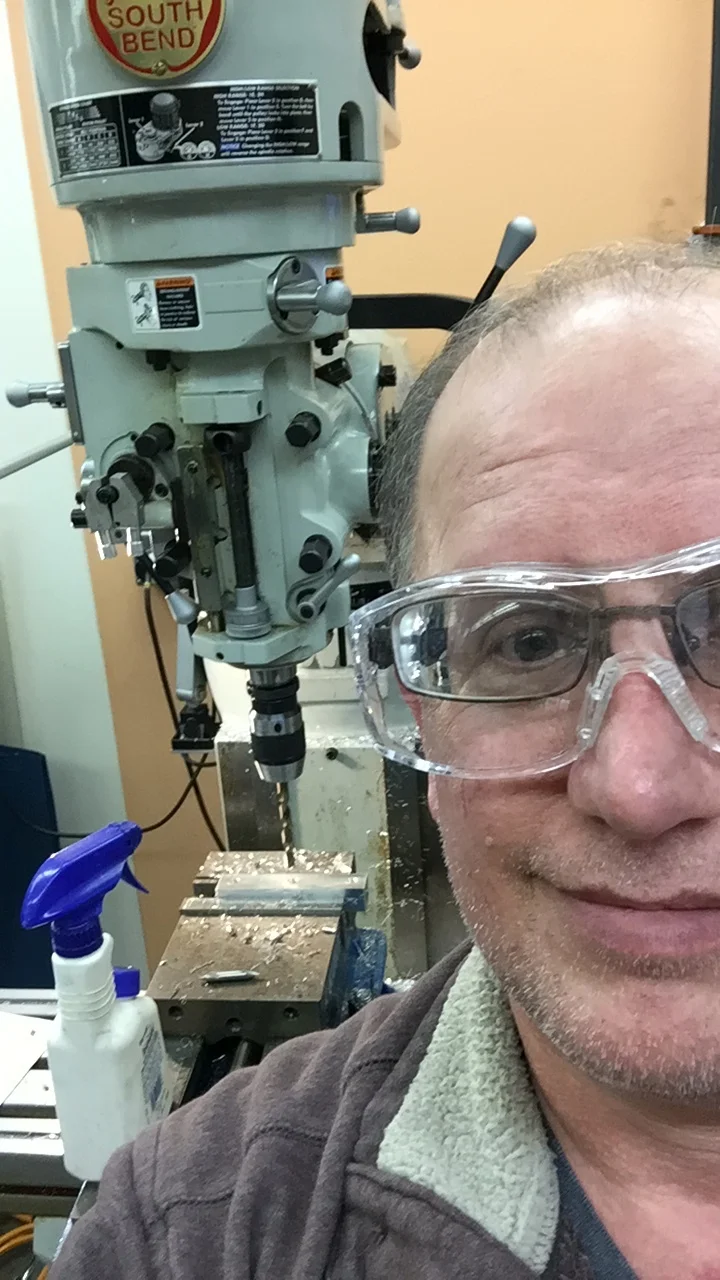I know it's been a while, a long while, but I'd like to get back to writing and blogging.
To start in, I thought I'd talk about something a bit new for me. That was getting to spend a few nights learning how to use a Southbend Mill and doing some machining. Mills are very different beasts compared to most regular woodworking tools. Metalworking is quite different too (there's no grain direction?)
What I learned is this isn't a totally different world in which there is no overlap with woodworking. In fact, we in woodworking shops could learn a lot from machine shops. The biggest initial take away is that machinists are really good at measuring. Like crazy good. In many cases, it's because the tools are designed to do that. Dial and digital calipers are very reliable and remove the parallax and positioning problems of rules. Setup blocks are great for very accurate but simple positioning. Dial indicators are amazing at seeing small differences (really small!) and making movements of stops and sleds repeatable.
There has been a feeling in woodworking that the extreme accuracy of machining just isn't necessary. I've found that even if it's isn't truly necessary, why not do it anyway. If it's actually faster and easier, the added accuracy is simply a bonus. Dial calipers and indicators are getting more common at woodworking stores too. Something nice you can do with even the cheapest pair of calipers - check the sizes of drill bits without trying to read that tiny engraving (I'm not getting younger and that text is getting smaller).
Another concept I learned is more a change in thinking. In woodworking, we're not always jig or setup minded. Sure, there are a bunch of standard jigs out there, but machinists are in the habit of figuring out how to make a jig or setup for just about any operation. How we make and use jigs on something like a table saw is different from on a mill, but the concept is the same. Need to know how to hold a piece and rotate it by an accurate 15 degrees, I'll bet with some thinking there's a way. There's a lot of machinist videos with tips and techniques. We don't have to be content with machines as the come.
Finally, why can't our drill presses be more like mills? One item I especially liked on the mill was the table which had a height adjustment in the front (how many of us loathe reaching around the back to adjust height). Plus, it keeps it's position with the bit and it has lots of places to clamp stuff too. Keeping that X-Y position to the bit is super helpful if you need to lower the table to change a bit and then want to raise it back up, but keep your center. I'm actually thinking of trying to after market something onto my drill press to do this. I will say, don't use your drill press for milling, they aren't made for it, it's rough on the machine and can lead to accidents.
What do you think? Can we merge machining into some of our woodworking practices? The machinists I talked with enjoyed having a woodworker around for a different perspective too (wait, you take the part to tool?) I see a lot of fun and interesting possibilities.

